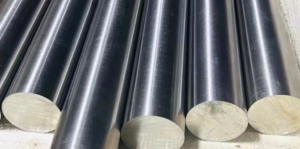Hastelloy and stainless steel, as two of the most commonly used materials in engineering and manufacturing, play an irreplaceable role in modern industrial production. Although both are alloy materials with excellent performance, they exhibit some differences in material composition, corrosion resistance, high-temperature resistance, and application areas. In this article, let’s take a closer look at the differences between Hastelloy and stainless steel.

4 Differences between Hastelloy and Stainless Steel:
Firstly, there are differences in material composition. Hastelloy is primarily composed of elements such as nickel, chromium, molybdenum, and iron, making it a high-performance high-temperature alloy. Stainless steel, on the other hand, is primarily composed of elements such as iron, chromium, nickel, and carbon. Additionally, some special stainless steels may contain alloying elements such as molybdenum, silicon, and manganese, making it a low-carbon steel with excellent performance.
Secondly, there are differences in corrosion resistance. Both Hastelloy and stainless steel are alloy materials with excellent corrosion resistance, but there are some distinctions between them. Compared to stainless steel, Hastelloy exhibits better corrosion resistance, particularly in severe chlorinated environments, where it can reduce pitting and crevice corrosion in oxidizing and reducing environments. Although stainless steel contains chromium and is less prone to rust, it can still exhibit corrosion in extremely harsh environments.
Furthermore, there are differences in high-temperature resistance. As an alloy with comprehensive excellent performance, stainless steel can maintain stable performance in high-temperature environments, with a maximum high-temperature resistance of up to 1100°C. However, chemical reactions will occur if the temperature limit is exceeded. Compared to stainless steel, Hastelloy exhibits stronger high-temperature resistance, demonstrating excellent high-temperature stability and oxidation resistance in high-temperature environments up to 1200°C. It can effectively resist oxidation and maintain stable performance under high-temperature conditions.
Additionally, there are differences in application areas. Hastelloy, as an iron-based high-temperature alloy with excellent performance, is widely used in aerospace, nuclear energy industries, and other fields due to its outstanding high-temperature resistance. Moreover, Hastelloy exhibits good corrosion resistance in oxidizing acids, alkaline solutions, and other corrosive media, making it widely used in marine engineering, petrochemical, and other fields. Similarly, stainless steel also exhibits good corrosion resistance in oxidizing, acidic, alkaline, and other wet environments, and is commonly used in food, chemical, medical, and other fields.
Conclusion
In conclusion, Hastelloy and stainless steel, as two alloys with excellent performance, have a wide range of applications in many industrial fields. However, their differences in material composition, corrosion resistance, and high-temperature resistance make them suitable for different application scenarios. Compared to stainless steel, Hastelloy has greater processing difficulty and higher cost. Therefore, in practical applications, the choice between Hastelloy and stainless steel should also consider specific environmental conditions and cost factors.
Why Choose Huaxiao Alloy?
Thank you for reading our article and we hope it can help you to have a better understanding of the differences between Hastelloy and stainless steel. If you are looking for suppliers and manufacturers of Hastelloy alloys, we would advise you to visit Huaxiao Alloy.
As a leading supplier of Hastelloy alloys from Shanghai China, Huaxiao Alloys offers customers high-quality Hastelloy alloys such as Hastelloy C22, and Hastelloy X at a very competitive price.



